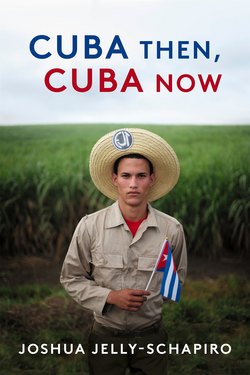Отрывок из книги
Joshua Jelly-Schapiro is a geographer and writer whose work has appeared in The New York Review of Books, New York, Harper’s, The Believer, Artforum, and The Nation, among many other publications. Educated at Yale and Berkeley, he is the coeditor, with Rebecca Solnit, of Nonstop Metropolis: A New York City Atlas. He is a visiting scholar at New York University’s Institute for Public Knowledge. Island People is his first book.
Acknowledgments
.....
The University of Havana was founded in 1728 and moved to its current location in 1901; it’s an institution through which very many of Cuba’s historical notables have passed. Like many landmarks here, though, even and especially the older ones, its resonance in the cityscape has a way of according with its role in the revolution—or with moments in Fidel’s younger life, more specifically, to which it played host. There’s a reason that, when climbing its great granite steps, you may call to mind the young Fidel, back when he was a prolix law student here in the 1940s, haranguing his peers about one or another constitutional abuse by some corrupt senator. Once the strapping first son of a rich landowner from the countryside, the onetime law student now ran a country that’s full of billboards praising his revolution but whose only piece of lasting graffiti—at least that I’ve ever seen—is a red scrawl on a wall across from the university steps. The graffiti, in a city where such spontaneous expressions from the young aren’t much tolerated, is carefully preserved from the era of Fidel’s own youthful rebellions. It reads “Batista Asesino”—Batista is a killer.
What Batista’s deposing by kids like Fidel, back in the ’50s, had now led to was a society with its own contradictions. But among the most vexing when I arrived in the fall of 2002, not too long after the end of what Castro had dubbed the “Special Period in Peace Time”—the lean season of scarcity after the fall of the USSR—was a whole set of problems arising from allowing U.S. dollars into the Cuban economy. Fidel’s government, needful of cash and having to pursue it from foreign sources, had recently made it legal for Cubans—people whom they directed to hate the United States and its capitalism with a passion—to possess and use U.S. dollars themselves. What this policy had meant, in the few years since they took this astonishing step, was the emergence of a bipartite economy. While state salaries were paid in Cuban pesos—a currency still usable here for unpackaged staples like rice and eggs and Chinese bike parts—the packaged goods and bottled sodas and TVs that everyone really wanted, so that they might live like their cousins in Miami, required dollars. (A few years later, the U.S. dollar would again be outlawed and replaced with something pegged to it but called the “convertible peso”; the dual economy remained.) What it also meant was that people like the gray-haired architecture professor whom I went to see at the university, a man with an advanced degree and an air of authority befitting his station at the nation’s top institution, was earning a state salary worth the equivalent of maybe twenty dollars a month. But when I asked him if he knew anyone with a room to rent, he didn’t pause; he scrawled an address on a torn edge of that day’s Granma, the official communist daily that was many Cubans’ best source for scrap paper. He sent me, a ready source of dollars, to an old student of his who he thought could use them.
.....
